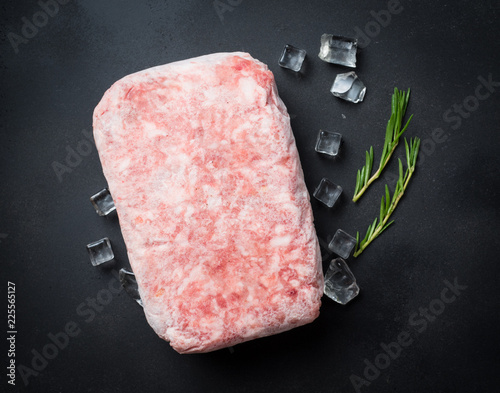Why and How to Cook Frozen MeatPosted by Mayang on December 5th, 2019
It's time for dinner, and without a plan, you're in a rush. You may be hungry and have been home from work late. Perhaps a bunch of kids are crying out to be fed in front of you. You open and look at the refrigerator. Nothing that would be fast enough would jump out at you. Or perhaps it's virtually empty. Hang on before you go ordering a pizza. Put it. Your own. Text. Down. Close the fridge. There's a variety there. It's strange how many of us never hear of frozen meat cooking. We all seem to share the sense that before cooking meat has to be defrosted. Or the other way around. But this is simply not true We sell fresh meat that is not frozen. But we know that our meat is freezing by many customers. And we also cut fresh meat for our freezer, for people who prefer to buy occasionally and store on frozen meat, or who have a long way to go with an order, or who like to take advantage of the fact that our retail freezer's cuts are always 20% off. Cooking frozen meat It's not rocket science to cook frozen meat. If you don't have time to defrost a steak or even a roast, all you need to do is add to your recipe some cooking time. Many cuts are easier to cook frozen than others–chops of pork, chops of lambs, and steaks are all quite simple. Ground beef is cautious, but a meat sauce is essential. It's a tricky thing like stir-fry beef. And use any tools at your disposal. For example, pressure cookers can accelerate the cooking time for a frozen roast. Frozen meat last long Our main concern with frozen meat is taste and texture, but we know that safety concerns a lot of people. We vacuum-seal our meat (fresh and frozen) because by eliminating the oxygen in the box it extends the life of the meat up to five years, thereby reducing the growth of bacteria causing meat to decompose. How long frozen meat lasts depends on your freezer (what form it is and how often you open it) and whether the meat has been vacuum-sealed, or if not, on the strength of the wrapper. If left in a freezer for too long, meat can dry out and pick up neighboring odors. There is usually no safety issue unless temperature changes, such as defrosting, freezing, and defrosting again, which gives bacteria a chance to grow.
Defrozing meat Before cooking, if you defrost your frozen meat, follow some basic thumb rules for the best taste and texture. Just keep in mind that you risk your meat going bad if you defrost the wrong way or for too long. We explain in our book, The Butcher's Guide to Well-Raised Food, the best way to defrost food: plan ahead. Take the meat out of the freezer and let it thaw in the lowest part of the refrigerator on a plate so that it will not drip on anything. It may take two to three days for a turkey or a roast. A steak can require only twenty-four hours, depending on its thickness. Hang it in the packaging if the meat is wrapped in plastic. When wrapped in paper, remove the paper when necessary. You can also defrost small portions of meat in a bowl of cold water if you haven't planned ahead. The water has to stay cold. Do not defrost with warm or hot water, whatever you do; it's a plea for food poisoning. If you defrosted something properly (i.e. not on the counter or in hot water and you haven't left it for more than two hours at room temperature) but don't get around to cook it, you can refreeze it. It'll be healthy, but the next time you thaw it, it may not taste or handle the same. Would you like to learn more? Here are the guidelines on thawing for the USDA FSIS. Or, cook your meat frozen next time. To buy frozen meat, please visit www.satsbrf.com. Like it? Share it!More by this author |



